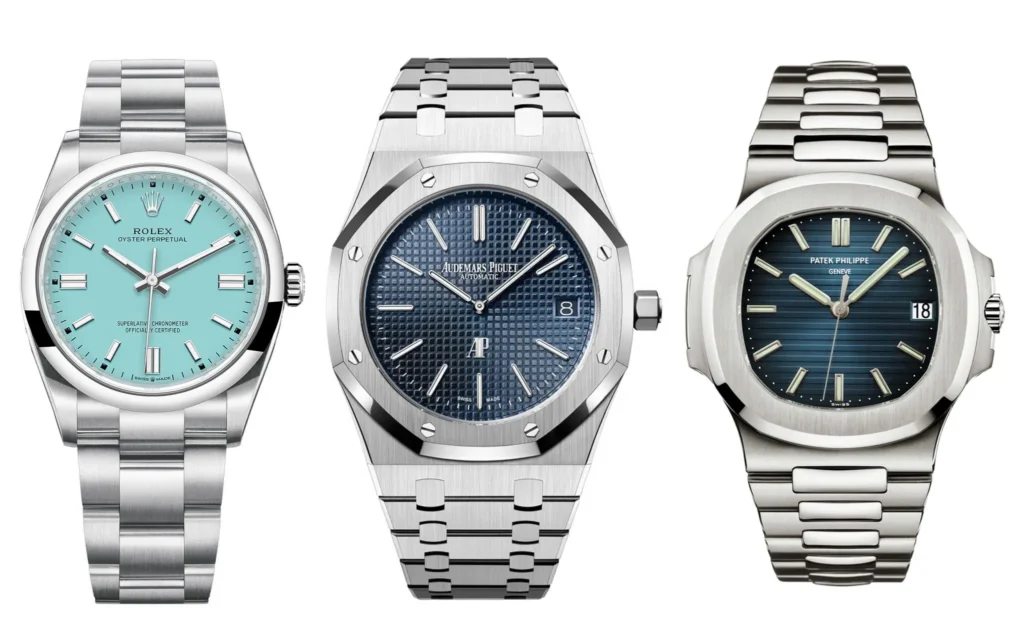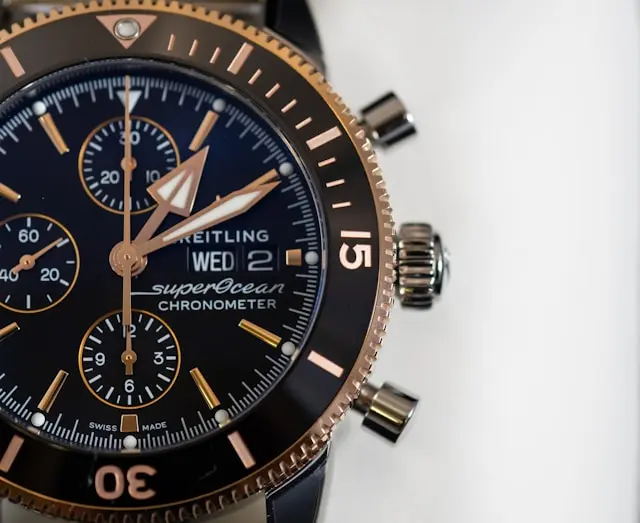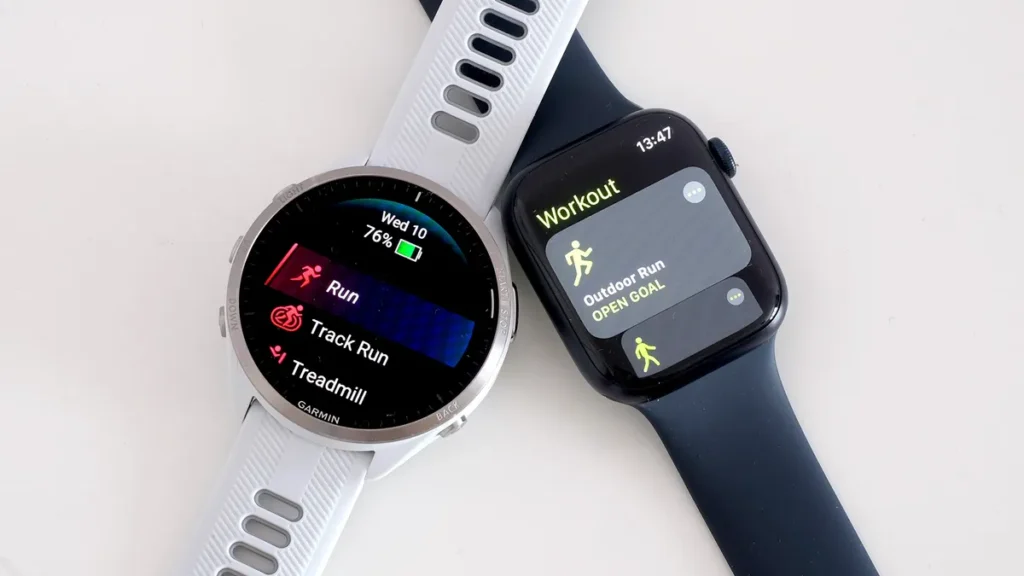Selling a watch can feel a bit like letting go of an old friend, but the thing is, you can actually make some serious cash if you place your cards right. But here’s the thing: selling a watch isn’t just about slapping a price tag on it and hoping for the best. Oh no, there’s an art to it an art that involves strategy, timing, and a little bit of insider know-how. And that’s where I come in!
Today, the second hand watch market is booming. Whether you’re flipping a Rolex to upgrade or letting go of that vintage Seiko you barely wear, your timepiece might be worth more than you think.

But how do you sell it smartly? Let’s break it down.
Step 1: Know Your Watch’s Worth
Before you can even think about selling your watch, you need to know what it’s worth. And I’m not talking about what you paid for it because (spoiler alert) watches don’t always appreciate in value. But some do, and that’s where things get interesting.
Do Your Research First
The first step is to do your homework. Check out the current market value of your watch by searching for recent sales of the same model. Websites like Chrono24, WatchBox, and eBay are great places to start. Look for watches in similar condition to yours, with similar features (like the bracelet type, dial color, and age), and note the prices they’re going for.
Before listing anything, you need to answer: what’s this watch really worth?
Factors that influence value:
- Brand & Model: Rolex, Omega, Cartier = 💰
- Condition: Scratches, worn straps, missing links = 🚩
- Original Box & Papers: These add up to 20–30% more value
- Service History: A well-serviced watch is a trustworthy one
- Market Demand: Is it a collector’s favorite or just “meh”?
Use platforms like Chrono24, WatchCharts, or eBay sold listings to benchmark prices.
Pro Tip: Don’t forget to account for special editions or rare models. Limited-edition watches or discontinued models can fetch significantly more than their regular counterparts!
Step 2. Condition is Everything
Let’s be honest: no one wants to buy a beat-up watch. The condition of your timepiece is one of the most significant factors in determining its value. So, before you list it for sale, take a good hard look at your watch. Is it scratched? Are there dents or dings on the case? How’s the crystal (the glass covering the dial)? Are all the parts original?
Polish or Not to Polish?
Here’s a hot debate in the watch-selling world: Should you polish your watch before selling it? Some buyers prefer a watch that’s in its original, unpolished condition because it retains its authenticity and history. However, if your watch is looking a little worse for wear, a light professional polish can breathe new life into it.
This is your watch’s Tinder profile make it swipe right worthy.
- Clean the Watch: Gently. Don’t damage it.
- Shoot in Natural Light: Show off those details!
- Include Multiple Angles: Dial, caseback, clasp, paperwork.
- Highlight Imperfections Honestly: Trust builds sales.
- Pro Tip: If you’re not sure, take your watch to a reputable jeweler or watchmaker and ask for their advice. They’ll know whether polishing will help or hurt your chances of getting top dollar.
Step 3. Gather All the Original Accessories
You know that box your watch came in? The one that’s been collecting dust in the back of your closet? Yeah, it’s time to dig it out! When it comes to selling watches, original packaging and papers (like the warranty card, manual, and receipt) can significantly boost the value of your watch.
Why It Matters
Buyers love knowing that they’re getting a complete package—especially when it comes to high-end luxury watches. Having the original box and papers shows that you’ve taken good care of your timepiece and that it’s authentic. It’s the equivalent of having the full set when selling collectible toys. Plus, it adds to the overall presentation and can justify a higher price.
This isn’t a dating app bio it’s a deal closer.
Include:
- Brand, model number, year
- Case size, movement type (automatic, quartz, etc.)
- Original parts or mods
- Purchase source & warranty status
Keep it honest, clear, and confident.
- Pro Tip: If you’ve misplaced the box or papers, don’t panic. You can still sell your watch, but be prepared for the value to be slightly lower.
Step 4. Get a Professional Service (If Needed)
If your watch hasn’t been serviced in a while, now might be the time to consider it. A professionally serviced watch especially one that’s been water-tested, had its movement cleaned, and had any mechanical issues fixed can increase its appeal to buyers. After all, no one wants to deal with a watch that breaks down the moment it arrives!
Full Service vs. Partial Service
Not every watch needs a full overhaul before being sold. If your watch is in excellent condition and running smoothly, a partial service (like getting the case polished or the bracelet adjusted) might be enough. But if it’s been years since your last service, or if the watch isn’t keeping time correctly, it’s worth investing in a full professional service.
- Pro Tip: Be sure to get a detailed receipt or service record that you can show to potential buyers. This adds transparency and builds trust.
Step 5. Timing is Everything
Believe it or not, the timing of your sale can impact the value of your watch. Certain brands and models tend to be more in demand at specific times of the year or after major product announcements. For example, luxury watches often see a spike in sales around the holiday season (think Black Friday or Christmas).
The Waiting Game
If you’re selling a high end brand like Rolex or Patek Philippe, consider waiting for the release of the brand’s new models. When new models are announced, older versions can either increase in value (due to scarcity) or decrease (as buyers rush to get the latest and greatest). Keep an eye on industry news and plan your sale accordingly.
- Pro Tip: Watch forums and online groups are excellent places to stay informed about upcoming releases and trends. Knowledge is power!
Step 6. Choose the Right Platform
Now that your watch is in tip-top shape and you’ve got all your ducks in a row, it’s time to choose where to sell it. There are a few different options, each with its pros and cons.
Choose Where to Sell
Pick your battlefield wisely.
Online Marketplaces
- Chrono24, WatchBox, eBay: Global reach, competitive prices.
- Pros: Huge audience
- Cons: Platform fees, scams, and shipping risks
Local Watch Dealers or Jewelers
- Instant quotes, expert advice
- Lower offers but hassle-free
- Best if you need cash yesterday
Social Media or Enthusiast Forums
- Reddit’s r/Watchexchange, Facebook groups
- More informal but more room for trust-building and negotiation
Warning: Always meet in public places or use secure platforms.
- Pro Tip: Be wary of fees! Some platforms take a percentage of your sale, so make sure to factor that into your pricing strategy.
Step 7. Private Sales
If you’ve got a network of watch enthusiasts or collectors, a private sale can be an excellent option. You avoid the fees and hassle of selling through a marketplace, and you might get a better price. However, private sales can take longer, and you need to be sure you’re dealing with trustworthy buyers.
- Pro Tip: Always meet in a safe, public place when selling a watch privately. Better safe than sorry!
Auction Houses
If you’re selling a particularly rare or valuable watch, consider going through a high-end auction house like Sotheby’s or Christie’s. Auctions can generate a lot of excitement (and high bids) for unique timepieces, but they also come with significant fees.
- Pro Tip: If you’re not sure whether your watch is auction-worthy, reach out to the auction house for a valuation. They’ll let you know if it’s worth putting your watch on the block.
Step 8. Create a Standout Listing
When selling online, the way you present your watch can make or break the sale. A well-crafted listing with high-quality photos and a detailed description is crucial.
Photos That Pop
Take clear, well-lit photos of your watch from multiple angles. Include shots of the front, back, sides, and any important details (like the movement or serial number). If you have the original box and papers, photograph those too.
Description is Key
Be honest and transparent about the condition of your watch. Include all relevant details, such as the brand, model number, year of production, materials (steel, gold, etc.), and any recent service history.
- Pro Tip: Highlight any unique features, like limited-edition status, rare dials, or original parts. These are the details that collectors love!
Step 9: Negotiate Without Getting Played
Everyone loves a deal, but don’t let anyone lowball your legacy.
- Set a “walk-away” price
- Be firm but polite
- Know when to accept a good offer
- Don’t fall for “instant payment, ship now” scams
Conclusion: Make the Most of Your Watch Sale
By following these tips, you’ll be well on your way to maximizing the value of your timepiece and making a sale that both you and the buyer are happy with. Whether you’re letting go of a vintage classic or upgrading to the latest luxury model, remember: preparation is key.
- Am I Hot or Not? I Asked ChatGPT, The Answer Left Me Shook
- Apple Watch vs. Garmin: Best Smartwatch for Fitness Buddies
- Astrology Meets Horology: How Your Zodiac Sign Influences Your Watch Style
- Best Yellow Dial Watches: Loud, Proud, and Unapologetically Stylish
- BMW Concept Speedtop Redefines Luxury Travel with Bold Three-Door Design







